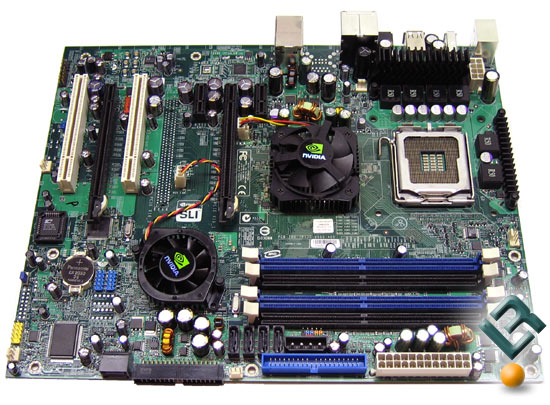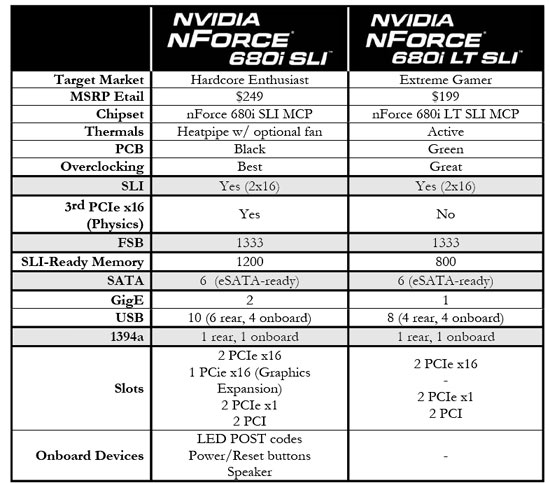eVGA 680i LT SLI Motherboard Review
NVIDIA Neuters The 680i SLI
When you have a top of the line product and want to fill the void between the high-end and the low-end one of the easiest things to do is remove some features on the high-end or add some features to the low-end and call it a day. That is exactly what NVIDIA has down with their 680i SLI platform as they have neutered it in a sense and have been able to slash the price by 20% while keeping the performance level of the board exactly the same as the more expensive 680i SLI motherboard.

Right off the bat one will notice that the nForce 680i LT SLI is green and has active cooling on both chipsets, but the layout looks just like that of the 680i SLI! That would be because the NVIDIA nForce 680i LT SLI platform is again ‘Designed by NVIDIA’, which means all reference designs will be identical. The NVIDIA nForce 680i LT includes true dual x16 PCI Express slots with support for SLI technology, and SLI-Ready memory with EPP for one-click access to enhanced memory settings.
The original 680i board will continue to serve as the high-end champ for NVIDIA and is clearly focused at the hardcore enthusiast. The 680i LT brings the 680i performance to the sub-$200 price point, and since it is focused directly at th extreme gamer, it keeps the key board and chipset features that this group of users care most about. Since the nForce 680i SLI motherboard is engineered for the hardcore enthusiast, it offers everything the LT board offers, plus LED POST codes, on-board power/reset buttons, 3rd PCIe slot for graphics expansion, and SLI-Ready memory up to 1200 MHz, a flexible and innovation thermal solution, and a black PCB.
Let’s take a closer look and see what the differences are between the 680i SLI that is marketed to the hardcore enthusiast and the 680i LT SLI that is aimed at extreme gamers. The areas in white in the chart below represent changes and the areas in light gray are things that have remained the same.

It looks like the board has a number of changes, but shouldn’t impact many users as very few people use a PCIe based physics card and both Gigabit Ethernet ports. Let’s take a closer look at the differences before moving on to the board itself and the performance numbers.

Comments are closed.